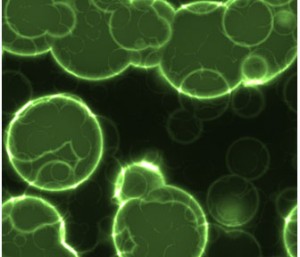Distinction of “official state microbe” could raise awareness of microbiology among students
Not many pathologists or clinical laboratory managers know that a race is on to become the first state to adopt a specific bacterium as the official state microbe. Wisconsin tried and failed. Now Hawaii is in the race for the distinction.
Just weeks ago, on March 6, 2012, Hawaii’s House of Representatives passed House Bill HB2079. This is a bill that would recognize the bacterium Nesiotobacter exalbescens as the state’s official microbe. This puts Hawaii in the running to be first to officially recognize a state microbe.
The Health Committee in the House of Representatives reasoned that recognition of an official state microbe would heighten awareness of microbiology and science, stated a story in the Hawaii Reporter. It could also stimulate interest in microbial discoveries and applications, the committee argued.
The Health Committee said it had singled out Nesiotobacter exalbescens for distinction because it has only been found in a very remote environment—a hypersaline lake on Laysan atoll in the Northwestern Hawaiian Islands.

Here’s the bacterium Nesiotobacter exalbescens that has been recommended by the Committee of the Hawaii House of Representatives to be the state microbe of Hawaii. If the bill is passed by both houses and signed by the governor, Hawaii would be the first state in the nation to have an official state microbe. (Photo by hawaii.politics.government.blogs.civilbeat.com.)
Testimony came exclusively from microbiologists and other scientists from the University of Hawaii. The measure won unanimous support in committee hearings. “Hawaii can lead the way,” stated Stuart P. Donachie, Ph.D., Associate Professor, Department of Microbiology, University of Hawaii. He is the scientist who discovered the Nesiotobacter exalbescens microbe in 2000. “Expose everyone to microbes!” urged Donachie to the committee. He has no commercial interest in the microbe.
Wisconsin’s Effort to Adopt First State Microbe Stalls in Senate
It was 2010 when the Wisconsin House passed a bill that named Lactococcus lactis as the state microbe. Since then, all sorts of wags—many of whom are microbiologists—have been busy nominating different microbes that could potentially lift other states out of their microbial oblivion.
In the case of Wisconsin, Lactococcus lactis was proposed to be the state microbe because it is the active agent used in making the tasty cheddar, Colby, and Monterey Jack cheeses for which Wisconsin is famed. However, the Senate did not pick up the bill. That left the field wide open for one of the remaining 49 states to seize the distinction of first state to adopt a state microbe.
State Microbe Movement Gains Momentum on Internet
So, it is with tongue in cheek that Dark Daily shares some of the “official microbe” suggestions being posted on the Web.
- Alabama: Karenia brevis, a dinoflagellate, aka the Red Tide Alga. A shoo-in if you think of the Crimson Tide. (Jenny Ridings, New Scientist)
- Alaska: The permafrost bacterium Carnobacterium pleistocenum found in 35,000 year-old ice. (Rowan Hooper, news editor, New Scientist)
- California: (1) Saccharomyces cerevisiae, for its importance in making wine. (Elio) (Also suggested for several other states)(2) The city of Los Angeles got a nomination for a “city microbe: Clostridium botulinum, the source of botox. (NPR listener; Rowan Hooper, news editor, New Scientist)
- Florida: (1) Retirement communities in Florida would appreciate the 250-million-year-old Lazarus bacillus Bacillus permians. Note that there is far from universal agreement about the longevity of this bacterium. (Rowan Hooper, news editor, New Scientist)
- Indiana: Zymomonas mobilis, a bacterium that produces ethanol very efficiently. Indy 500 cars run on ethanol. (AmoebaMike, New Scientist)
- Texas: The oil eating Synthropus may be useful for cleanup of oil spills. (Rowan Hooper, news editor, New Scientist)
Scoffers may pass off the state microbe craze as a mere fad, or worse, frivolous. To these doubters, Moselio Schaechter, Ph. D., Distinguished Professor, Emeritus, Tufts University School of Medicine and Adjunct Professor Emeritus, Department of Biology, San Diego State University, whose blog, Small Things Considered, muses on all things microbial, offers an insightful retort. “There could be an educational point to this. Kids in each state, when presented with the state microbe, may want to figure out what makes the microbe special and even learn something about microbes in general,” he blogged.
Clinical laboratory managers and pathologists everywhere may even take heart that the state microbe craze will go viral. In turn, that could possibly drive countless numbers of young enthusiasts into a life of medical laboratory science, thereby relegating staffing shortages to a thing of the past.
—Pamela Scherer McLeod
Related Information:
House Passes “Official Microbe” Bill




Thank you for printing this wonderful article about Hawaii and Stuart Donache, PhD and his discovery of Nesiobacter exalbescens. Let’s hope that Wisconsin and other states get on board and name their state microbes.
Sincerely,
Helen